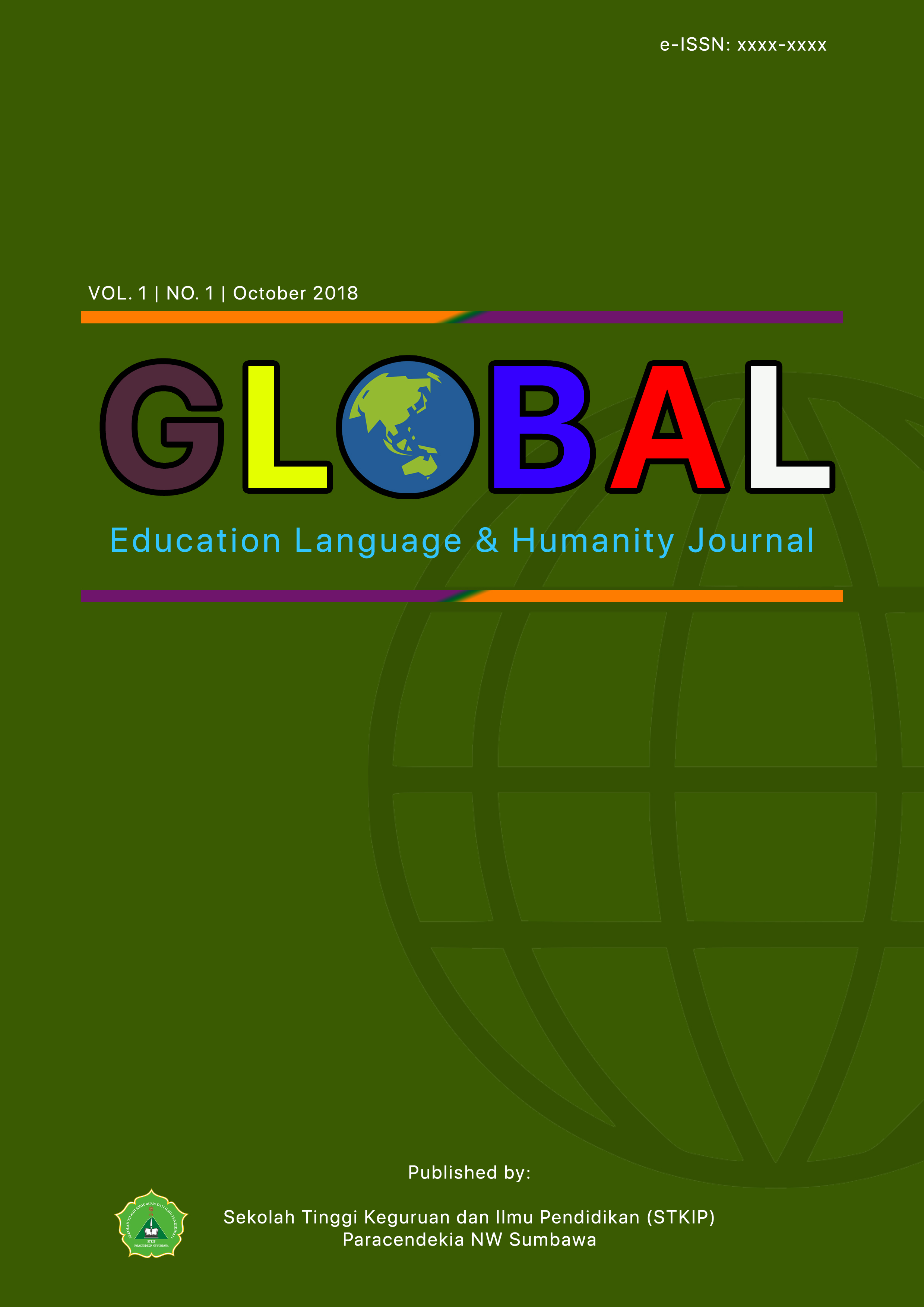AN ANALYSIS OF SOUND DELETION IN SUMBAWA LANGUAGE
Keywords:
Sound deletion, Sumbawa language, and phoneme.Abstract
This study uses a qualitative descriptive method in analyzing the data. There were 10 participants with 15 conversations held in Telaga Bakti Hamlet. To collect data, three techniques were used, namely observation, audio recording, and introspection. In analyzing the data, the researcher used four steps, namely: (1) Identifying the data, (2) Classifying the data, (3) Describing the data, and (4) Explaining the data. Some research results are described in the form of words: Apheresis: 'tita' (while ago). From the word 'tita' which means (while earlier) one or more phonemes have been zeroed out at the beginning of the word. The whole word must be 'satita', the word 'satita' focuses on the first phoneme, namely the consonant phoneme 's' and the vowel 'a'. Syncope: 'malo?' (Is it true?). The elimination of sounds is caused by the language environment and as an effort to save speech by speakers. Based on the research results, the researchers concluded that the Sumbawa language produced was divided into three forms, namely apheresis, syncope, and apocope. Factors causing the loss of sound are efforts to save speech and as a common language in society.
References
Asako, S. (2014). Deixis in The Sumbawa Besar Dialect of Sumbawa. NUSA 56, 139-152
Both, C. (2016). Phonological Phenomena of Hungarian Loanwords in the Romanian Language. De Gruyter Open, ACTA Universitatis Sapientiae, Philologica, 8,3, 117-126.
Harun, U. (2013). The Symptoms of Zeroization and Anaptiksis In Gorontalo Language Tutorials in the Community of Tabumela Village, Skripsi S1, Universitas Negeri Gorontalo.
Jazadi, I. (2008). The Politics of Curriculum: An Interpretive Study of English Language Teaching and Learning at High School in Indonesia. Sumbawa Besar: STKIP Paracendekia NW Sumbawa.
Jazadi, I. (2017). Introduction to Sumbawanese Language. STKIP Paracendekia NW Sumbawa. Available online, https://www.academia. edu/34005144/AN_Introduction_to_Sumbawanese_Language_Adapted_and_Translated_Materials. Retrieved on August, 10 2017.
Mahsun. (2014). Metode Penelitian Bahasa: Tahapan Strategi, Metode, dan Tekniknya. Jakarta: Rajawali Pers.
Mahsun, Burhanuddin, Kasman, Zulkarnain, Jabaruddin. (2009). Kamus Sumbawa-Indonesia. Mataram: DEPARTEMEN PENDIDIKAN NASIONAL PUSAT BAHASA-KANTOR BAHASA PROVINSI NTB
Markub. (2015). Changes in Sound of Phoneme on Indonesian Vocabulary in Thai Malay Vocabulary. Universitas Islam Darul Ulum Lamongan.
Muhammad. (2011). Paradigma Kualitatif Penelitian Bahasa, Yogyakarta: Liebe Book Press.
Muslich, M. (2015). Fonologi Bahasa Indonesia: Tinjauan Deskriptif Sistem Bunyi Bahasa Indonesia. Jakarta: Bumi Aksara.
Seken, I, Sumarsono Basuki, I Made Gosong, I Gusti Putu Antara. (1990). Morfologi Bahasa Sumbawa. Jakarta: Pusat Pembinaan dan Pengembangan Bahasa.
Sugiyono. (2016). Metode Penelitian Pendidikan: Pendekatan Kuantitatif, Kualitatif, dan R & D. Bandung: ALFABETA
https://en.wikipedia.org/wiki/Apheresis_(linguistics). Retrieved online on August, 20 in 2017.
https://en.wikipedia.org/wiki/Syncope (phonology) Retrieved online on August, 20 2017.
https://en.wikipedia.org/wiki/Apocope. Retrieved online on August, 20 2017.









